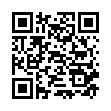|
This article is cited in 2 scientific papers (total in 2 papers)
Physics
Formation of compounds based on bismuth ferrite with partial substitution of bismuth ions by lanthanum and praseodymium
Yu. A. Lupitskaya, D. A. Kalganov, Yu. O. Afanas'ev
Chelyabinsk State University, Chelyabinsk, Russian Federation
Abstract:
Using the solid-phase reaction method we obtained bismuth ferrite based compounds generated by partial substitution of bismuth ions with rare earth metal ions (lanthanum and praseodymium). We used thermogravimetric analysis and X-ray analysis at the temperature range from 297 to 1123 K to study the peculiarities of the processes of phase formation of reaction-products synthesis in the systems which contain oxides of iron, bismuth, lanthanum, and praseodymium; their compositions were also determined. For the final synthesis temperature of 1123 K we determined a homogeneous concentration area, where bismuth ferrite solid solutions with the structure of distorted perovskite exist. We studied the influence of lanthanum and praseodymium oxides on phase composition of bismuth ferrite compounds in the process of isovalent alloying of a part of bismuth ions by lanthanum and praseodymium ions. In the frequency range of 20 Hz–1 MHz we determined the key parameters, which characterize electrical and magnetic properties of perovskite-like phases. We found that for the considered samples the frequency dependencies of complex magnetic permeability and electrical parameters (real and alleged part of permittivity) are of almost the same type. We showed that for the given frequency range both electrical (complex permittivity) and magnetic (complex magnetic permeability) parameters decrease with the frequency increase.
Keywords:
bismuth ferrite, solid solutions, distorted perovskite structure, electrical and magnetic properties.
Received: 30.01.2018
Citation:
Yu. A. Lupitskaya, D. A. Kalganov, Yu. O. Afanas'ev, “Formation of compounds based on bismuth ferrite with partial substitution of bismuth ions by lanthanum and praseodymium”, Vestn. Yuzhno-Ural. Gos. Un-ta. Ser. Matem. Mekh. Fiz., 10:2 (2018), 74–79
Linking options:
https://www.mathnet.ru/eng/vyurm377 https://www.mathnet.ru/eng/vyurm/v10/i2/p74
|
| Statistics & downloads: |
| Abstract page: | 102 | | Full-text PDF : | 31 | | References: | 18 |
|



 Contact us:
Contact us: Terms of Use
Terms of Use
 Registration to the website
Registration to the website Logotypes
Logotypes







 Citation in format
Citation in format 
